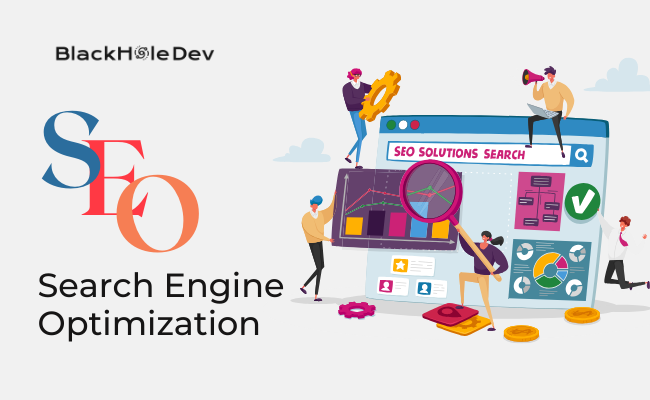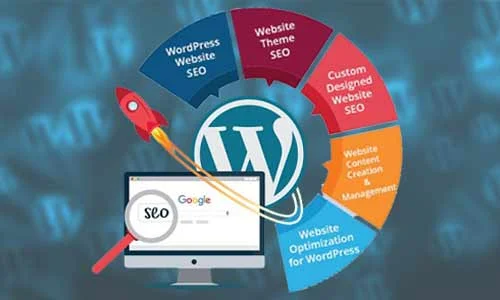Nowadays, developing an app has become a significant part of our daily lives. Whether looking for a new recipe, managing your finances, or connecting with friends and family, there’s an app for nearly everything.
However, successfully developing an app is not just about having a great idea; it’s also about implementing key features that make your app user-friendly, engaging, and competitive. So, keep in mind the essential aspects while taking apps development services.
Here, let’s consider the crucial features when developing an app to ensure it stands out in the crowded market.
User-Friendly Interface
The user interface (UI) of an app is among the first things that users notice about it. A clean, intuitive, and user-friendly design can significantly impact the overall user experience.
Consider creating a simple and easy-to-navigate interface with a consistent design that reflects your brand’s identity. Incorporate user feedback and conduct usability tests to ensure that your app’s interface aligns with users’ expectations and needs.
Responsive Design
With the diversity of mobile devices available, it’s essential to create an app that adapts to various screen sizes and orientations. Implement responsive design techniques to ensure your app functions seamlessly on smartphones and tablets. A responsive design allows your app to provide an optimal experience, regardless of the device users have.
Speed and Performance
Applications with sluggish loading times might irritate users and increase dropout rates. To avoid this, optimize your app’s performance by minimizing loading times and reducing lag. Efficient coding, image compression, and efficient data management can all help to make the user experience quicker and more seamless.
Cross-Platform Compatibility
To reach a broader audience, think about creating your app for both iOS and Android. Cross-platform development tools like React Native or Flutter allow you to build apps running on both operating systems, reducing development time and costs. By reaching a wider user base, you can increase your app’s potential for success.
Secure Authentication
User data security is a top concern for app users. Put strong permission and authentication procedures in place to safeguard user privacy. Features like two-factor authentication (2FA) and biometric recognition can boost consumer trust while adding more security.
Personalization
Personalization is a key feature that can significantly enhance the user experience. Tailor your app’s content and recommendations to individual user preferences and behavior. In addition to raising user engagement, personalization helps users feel more connected to the app.
Push Notifications
Push alerts are an effective way to maintain user engagement and inform about your app’s updates, promotions, or relevant content. However, it’s essential to use them judiciously to avoid overwhelming users. To keep consumers interested, provide them the option to personalize their notification settings and deliver useful, timely information.
Offline Functionality
In an increasingly connected world, apps that can work offline are highly appreciated. Incorporate features that allow users to access essential content or perform critical actions even with limited or no internet connection. Offline functionality can set your app apart from competitors and increase user loyalty.
Social Media Integration
Social media is a significant part of many users’ lives, and integrating your app with popular social platforms can enhance user engagement.
Permit people to sign in with their social networking credentials, share content on social networks, or connect with friends through your app. This can also help with viral marketing and expanding your app’s user base.
Feedback and Support
User feedback is invaluable for improving your app. Provide a seamless way for users to submit feedback and report issues within the app. In addition, offer responsive customer support to address user concerns promptly.
Demonstrating that you care about user input and are committed to resolving issues can build a loyal user base. On the other hand, when you hire an app or web development agency, read the feedback and reviews about that company to get authentic services.
Analytics and Data Insights
Implementing analytics tools within your app is crucial for understanding user behavior and making data-driven decisions. Analyzing user data allows you to pinpoint areas that need work, measure the success of new features, and refine your app’s overall performance and user experience.
Monetization Options
Decide on your app’s monetization strategy early in the development process. Whether you plan to generate revenue through ads, in-app purchases, subscriptions, or a one-time purchase, your chosen strategy should align with your target audience and the value your app provides. Remember to balance monetization and providing a valuable free experience to attract and retain users.
Accessibility
Make sure your app is usable by everyone, including people with impairments. Implement features such as screen reader compatibility, voice control, and high contrast modes to make your app functional for a wider audience. Not only is accessibility a moral imperative, but it can also increase your app’s user base and reputation.
Localization
If you’re targeting a global audience, consider localizing your app to cater to users in different regions. This involves translating the app’s content, adapting to local cultures and preferences, and supporting various languages and currencies. Localization can greatly enhance your app’s global reach.
A/B Testing is Essential After Developing an App
You can test many app iterations with A/B testing to determine which features and design components your consumers respond to the most. You may maximize the functionality and user experience of your app by conducting tests and evaluating the outcomes to make data-driven decisions.
App Should Be Hybrid
In the ever-evolving landscape of app development, choosing the right approach is paramount. Opting for a hybrid app offers a strategic balance between native performance and cross-platform flexibility. By combining the best of both worlds, hybrid apps ensure seamless user experiences across various devices and operating systems.
This approach not only streamlines development but also maximizes reach, making it a compelling choice for businesses aiming for broad accessibility without compromising performance. Embrace the versatility of hybrid apps for a unified and efficient application strategy.
Final Thought
Developing an app requires careful consideration of a lot of features to boost customer satisfaction, improve functionality, and stay competitive in the app market. By focusing on user-friendliness, responsiveness, security, personalization, and other critical aspects, you can create an app that not only meets users’ needs but also exceeds their expectations.
Regular updates, user feedback, and continuous improvement are essential for maintaining long-term success in the ever-evolving world of mobile apps.
Special thanks to Trending US News for letting us share the valuable blog.





